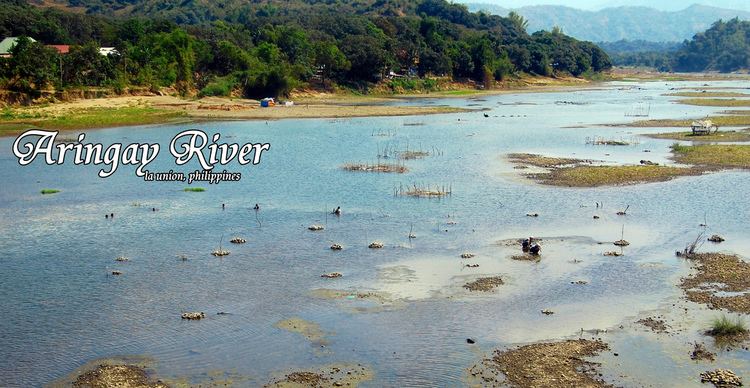Country Philippines District 2nd District Barangays Area 84.54 km² Area code 072 Province La Union | Region Ilocos (Region I) Founded 1641 Time zone PST (UTC+8) Population 44,949 (2010) Local time Wednesday 4:10 PM Dialling code 72 | |
 | ||
Weather 27°C, Wind NW at 6 km/h, 78% Humidity | ||
Aringay (Ilocano: Ili ti Aringay) is a second class municipality in the province of La Union, Philippines. According to the 2010 census, it has a population of 44,949 people.
Contents
Map of Aringay, La Union, Philippines
Its boundaries are formed by the municipalities of Caba and Burgos to the north, Agoo to the south, the foothills of the Cordillera Central mountain range to the east, and the Lingayen Gulf to the west. Aringay belongs to District 2 in the province.
The town experiences the prevailing monsoon climate of Northern Luzon, characterized by a dry season from November to April and a wet season from May to October. Its economy is based primarily on agriculture, producing rice, tobacco and fruit crops as economic staples. A nascent tourism industry is centered on its beach resorts. Its ethnic population is predominantly Ilocano and Christian (Roman Catholic).
History
Aringay was an ancient village known in pre-colonial times as Alingay or Alinguey. When Spanish colonizers arrived in the late 16th century, they found an enclave of ethnic Pangasinenses actively trading with their Ilocano and Ifugao neighbors and traders from China, Japan and Southeast Asia. The presence of Spanish soldiers, administrators and Augustinian missionaries ushered in the town’s colonial era and its conversion to Roman Catholicism.
Aringay remained a part of Pangasinan province until April 18, 1854, when the Spanish fused the northern towns of that province with the southern towns of Ilocos Sur to create the new province of La Union (hence, "The Union") The municipalities of Caba and Gallano (later placed in the province of Benguet and then abolished in 1900) were later carved out of Aringay’s northern borders.
The 18th and 19th century marked the active expansion of Ilocano territory. Scores of migrants from the Ilocos provinces pushed their way south so that by the end of the 19th century, Aringay was home to mostly Ilocano and Ilocanized Pangasinenses.
Outbreaks of rebellion rocked the town during four centuries of Spanish, American and Japanese colonization. Bloody confrontations ignited by revolutionaries such as Diego Silang and Gabriela Silang during Spanish occupation and by insurgents during the Philippine-American War and the Japanese occupation in World War II marred the bucolic villages of Aringay.
A decisive battle on Aringay River against U.S. forces crippled US forces . By 1901 the province of La Union was freed by American occupation.
Japanese forces attacked Aringay on December 1941 and occupied the town until their brutal withdrawal in 1945-1946, when many Aringayenos massacred the entire battalion of Japanese command in Aringay.
